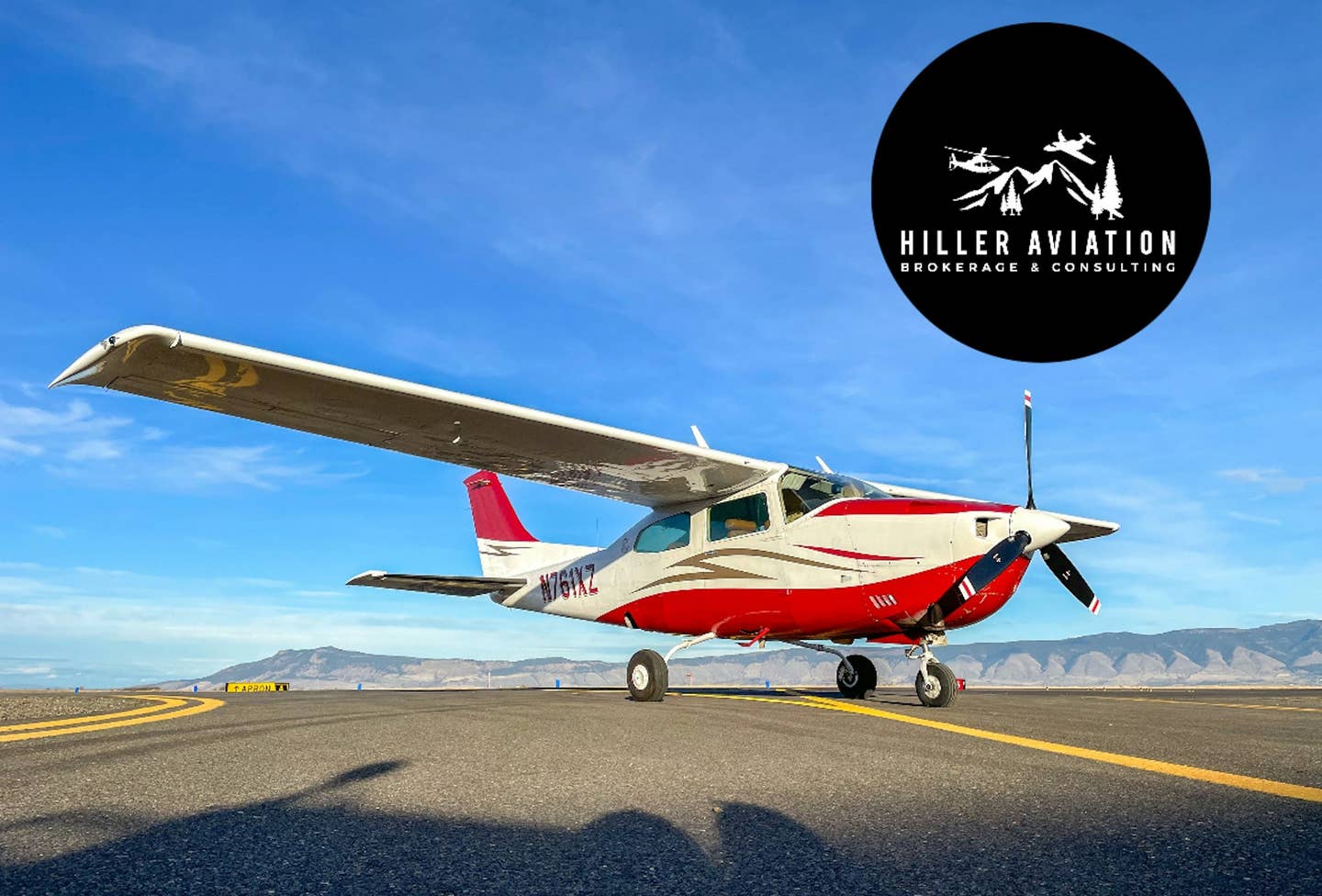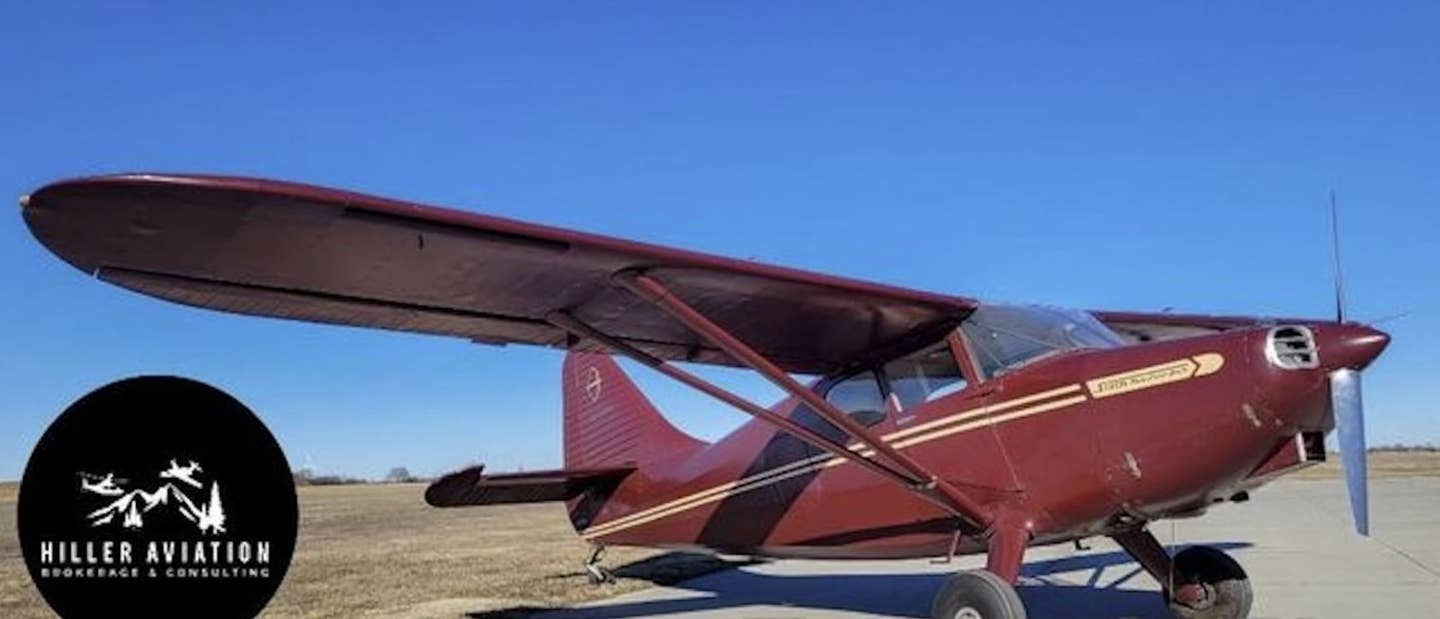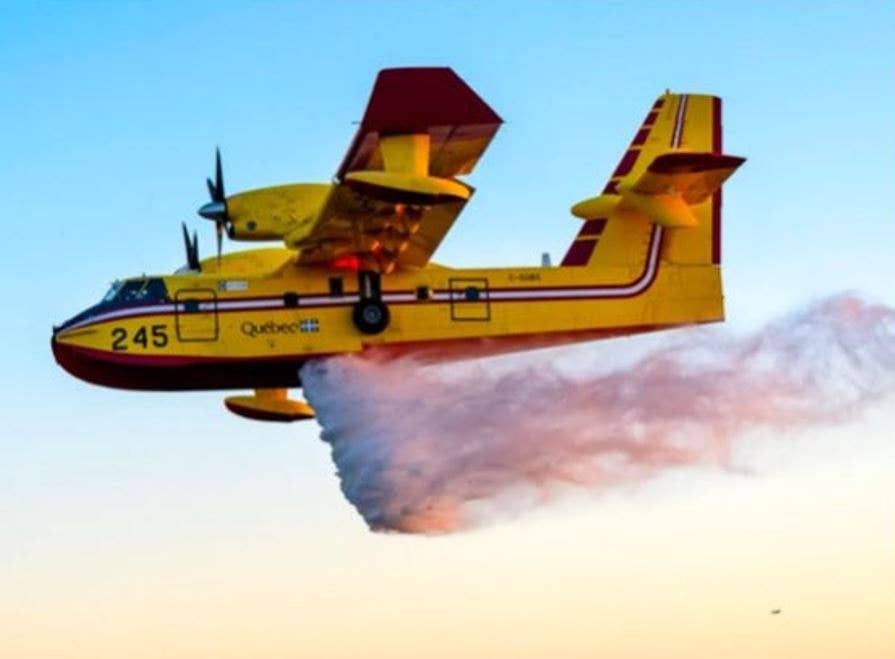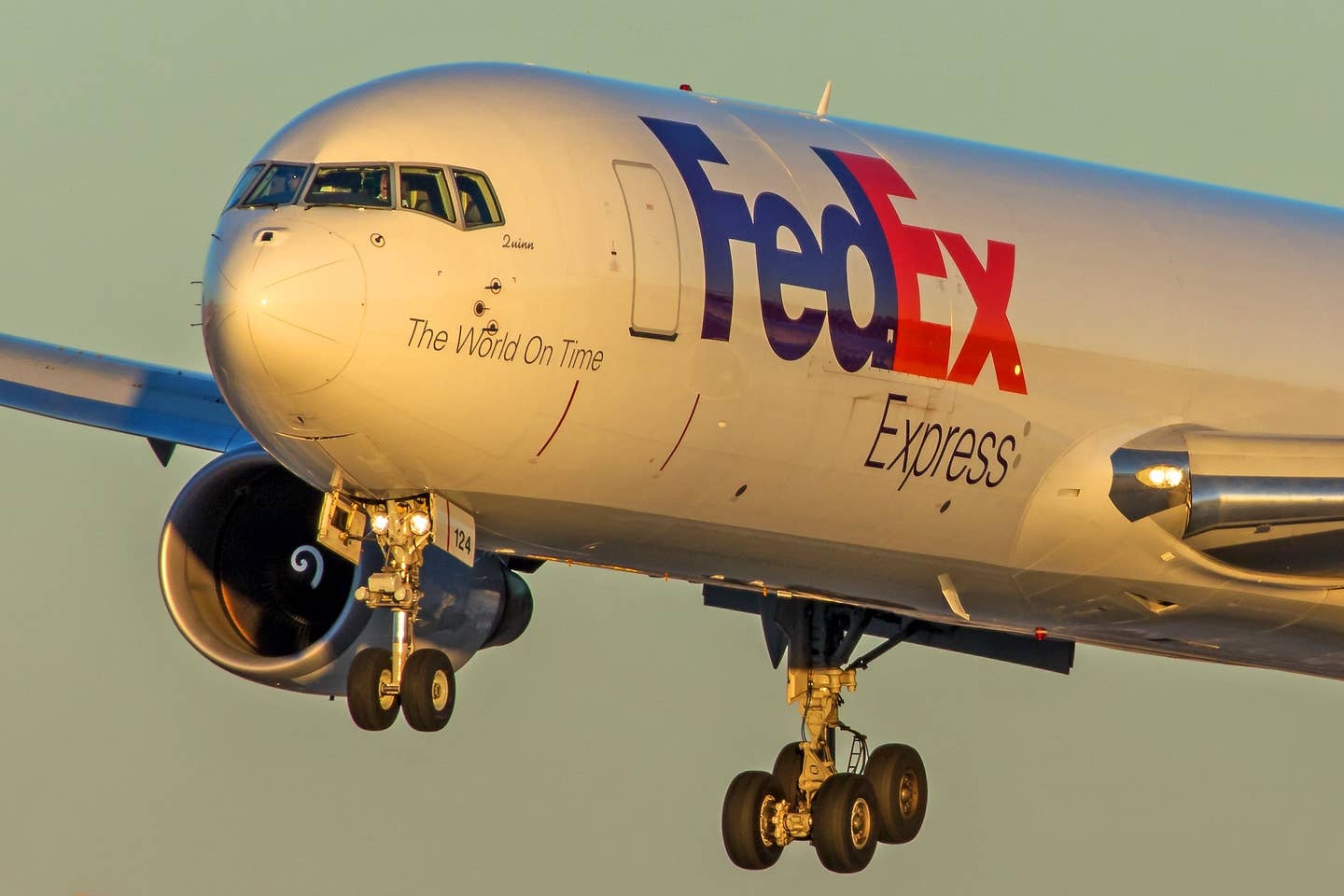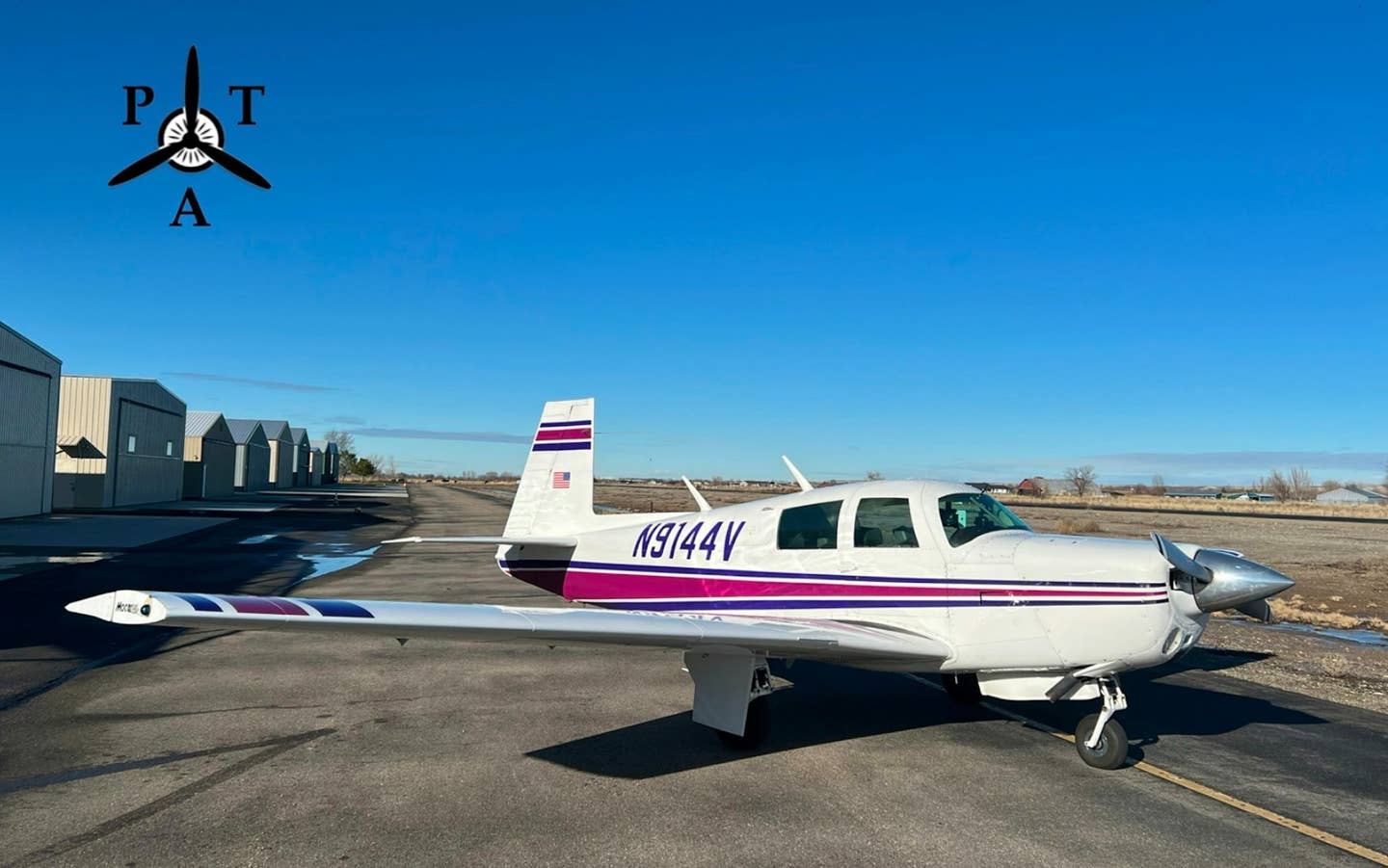
DeCrane Aerospace’s PATS Aircraft
Systems does more than tank installation
and maintenance on the BBJs it services
— interior design has been added
to the list. DeCrane Aerospace
JUNE 2010 — ON A COLD WINTER'S DAY, an elegant Boeing 737-700 painted a subdued gray flew low toward the east over a very rural portion of Delaware, arched its back and turned to the north, then reversed course to land on the just barely 5,000-foot runway at Georgetown (KGED). With a spirited roar of reverse, the airplane slowed to a crawl, crept off the runway and taxied toward a group of hangars that seemed out of place at such an otherwise bucolic-appearing airport. It was the same airplane that had just months before carried former President Bill Clinton to Korea, where he had secured the release of two female reporters.
What in the world could explain the arrival of such an intriguing airplane at such a quiet place? DeCrane Aerospace's PATS Aircraft Systems, that's what. This is where Boeing Business Jets can come and get additional fuel tanks, interiors, maintenance, 36- to 72-month checks and nine-year inspections. When PATS founder Harvey Patrick began installing auxiliary tanks in airplanes in the mid-70s, he might not have predicted the reliable parade of green Boeings (mostly 737s) to PATS, but, in fact, there is one.
Hosted at a tour by Mark Ryan, John Martin and Matt Hill, I came away impressed with the BBJ, both the concept and the airplane, and the work done in my daughter's hometown by the 450 craftsmen and engineers at PATS. This midwinter visit was arranged by Steve Taylor, president of Boeing Business Jets, who sent me out amongst the chicken farms to see for myself just a part of the BBJ story.
It turns out that to install additional tanks on the assembly line of airliners at Boeing's Washington state plant is too disruptive to the process, so BBJs not yet painted are flown to KGED for installation. At the request of some customers, interiors are also installed; DeCrane's family of companies does the cabins on Cessna, Falcon and Bombardier jets, among others, so this seems like a natural fit.
It is hard to pick which part of the enterprise is most impressive. The interiors are amazing in their craftsmanship and, in some cases, their opulence (largely depending on the owner's taste and what part of the world they call home). Most, however, have a living room feel and a sense of comfortable purpose. Elaborate audio-visual systems are common, and as Mark said, "They don't scrimp." An average interior weighs 14,000 to 17,000 pounds and can add $20 million to $30 million to the price of the jet.
For that kind of money, you get a flying home. Interior designers are often involved, and as Mark said, "Many interior designers have no idea about zero fuel weight, so we have to work through their desires for granite countertops and marble tables."
When asked about the most "intriguing" interior requests, my hosts mentioned water beds, showers, kids' rooms and nanny rooms. Sometimes a simple-sounding request involves lots of engineering ingenuity. A high shower stall means higher water pressure, runoff tanks and more plumbing. Airplanes for heads of state have both private and public areas for rest, meeting and nourishment. Some of the interiors almost made such a job look appealing.
Most BBJs average only about 500 hours a year, so the airframes get very few hours compared with their commercial brethren, but wear and tear is inevitable, and airplanes cycle back to Georgetown for refurbishment, updates and upgrades. I glanced into the hangar where a magnificent airplane with a U.S. registration was undergoing just such treatment. The airplane had arrived from home base in Russia a few days before my visit. I stirred in my seat, eager to see how a Russian oligarch really travels.
One thing I already knew: The airplane had flown to White Plains, New York, from Russia nonstop. According to flightaware.com, nine hours and 39 minutes after takeoff from Vnukovo International in Moscow, the airplane was in New York. This is just a walk in the park for a BBJ.
Before a tour, I looked at some of the amazing performance enhancements provided by those fuel tanks. There isn't an airplane owner or operator on the planet who doesn't wish their airplane had another hour's worth of fuel. I know that our own Cheyenne could make every trip between Tampa and New England nonstop, each direction, if, and only if, we had another 70 gallons of gas. The same dilemma faces 737 operators; it is just that the scale is different. Since BBJs won't be carrying 130-plus airline passengers and their hair dryers packed in huge suitcases, baggage hold space can be given over to fuel tanks.
Imagine this bargain: For a 1 percent to 2 percent increase in price for tank installation, range can be extended by almost 50 percent. It's true. For $2 million to $4 million the range of a 737-700 can be extended from 4,190 nautical miles to 6,210! When I heard this, I immediately asked if PATS might be able to do the same for our airplane.
"Sure!" said John.
Tank installations range from one to nine tanks, but most owners install seven. A tank itself weighs about one pound per gallon of added fuel. SFARs (special federal aviation regulations) require exacting installation. Fuel valves must function with all ignition sources out of the fuel tanks. Wiring separation is strictly prescribed. This kind of work isn't for a bunch of rookies with a rivet gun and dreams of making a fortune.
To accommodate the increased weight in the hold necessitated by the tanks, the cabin floor and side brackets must be reinforced. PATS has about 1,400 installed tanks in its logbook. Most are in 737 BBJs, but it has done work for the Air Force, Army, Bombardier and Fokker. DeCrane's ODA (organization delegation authority) allows the company to perform modifications in the field. Teams have been sent to Basel, Switzerland, and Shannon, Ireland, to install tanks. PATS operates within the Philadelphia FSDO, and John agreed that "they're good. We have a great relationship."
After this briefing, I was itching to get into the hangar and see some real airplanes. We started with a walk around a new BBJ headed for the Far East. The unpainted airplane was an iridescent green, not unlike a teenager's ideal color for a hopped-up Chevy Camaro. It was surprisingly handsome, I must say. The tanks were just going in, the wiring for the audio-visual systems was already in place, and the craftsmen were installing the special seat tracks for those huge, luxurious thrones that befit such an extraordinary concept as an airplane for a few.
Mark explained that the five- to six-week tank installation time requires certain procedures to maintain the airplane during the down time. The engines are "pickled" and covered. The tires are rotated every 21 days. ("New owners don't want a flat spot on their new tires," Mark said). The APU must be fired up periodically. Cabin installation can take several months, depending on design and those pesky change orders, so these measures, and lots of others, are critical to be sure the airplane is flawless for delivery.
We climbed into the slightly used Russian airplane via a scaffold. At the top of the stairs we each stooped to remove our shoes. As if we were entering a museum, we glanced at the all-glass front of the airplane then turned toward the back. A small room held two first-class seats for crew rest. The aisle then opened up to what appeared to be a living room. A huge marble table dominated the space. Cup holders spaced every few feet called to mind a spirited card game at 40,000 feet with lots of vodka.
The entrance to the next cabin was framed with dark mahogany on which two welcoming lamps were mounted, much like you might have on your front door. More space followed. It was clear that more than vodka drinking went on in this space; work was done on the airplane. Desks and phone gave way to staff seating and then, way back, was the queen-size bed, mounted slightly askew from the long axis of the airplane to allow tired passengers to crawl in for a rest from either side. I could not suppress some sexual fantasy; this is mile high with a distinct aura of class and no gymnastics required. You'd be well oxygenated too. BBJs have a cabin altitude about 2,000 feet lower than most commercial airplanes do so that the passengers on these airplanes will be well-rested when they arrive to negotiate that multibillion-dollar deal or to wrangle with another government about trade agreements.
We ended up with a look at the just-landed airplane, the one that recently appeared in newspapers and on televisions around the world. I asked the copilot about the flight from Burbank to Las Vegas to Georgetown. I was especially interested in landing such a beast on that little runway, the same one I have trouble managing in our Cheyenne.
Mark had joked that all pilots landing BBJs at KGED are called "Stretch." Sure enough, the first officer was tall and handsome. "Well," he drawled, "we had the auto brakes on max!" The airplane, he allowed, had left KLAS with 29,000 pounds of gas and landed with 9,000 in the tanks. Vref was under 130 knots!
Then it hit me. Not only had this airplane filled a historic role in defusing an international crisis, but it also had just crossed the United States on a third of a tank of gas. My wife's Prius can't come close.

Sign-up for newsletters & special offers!
Get the latest FLYING stories & special offers delivered directly to your inbox

